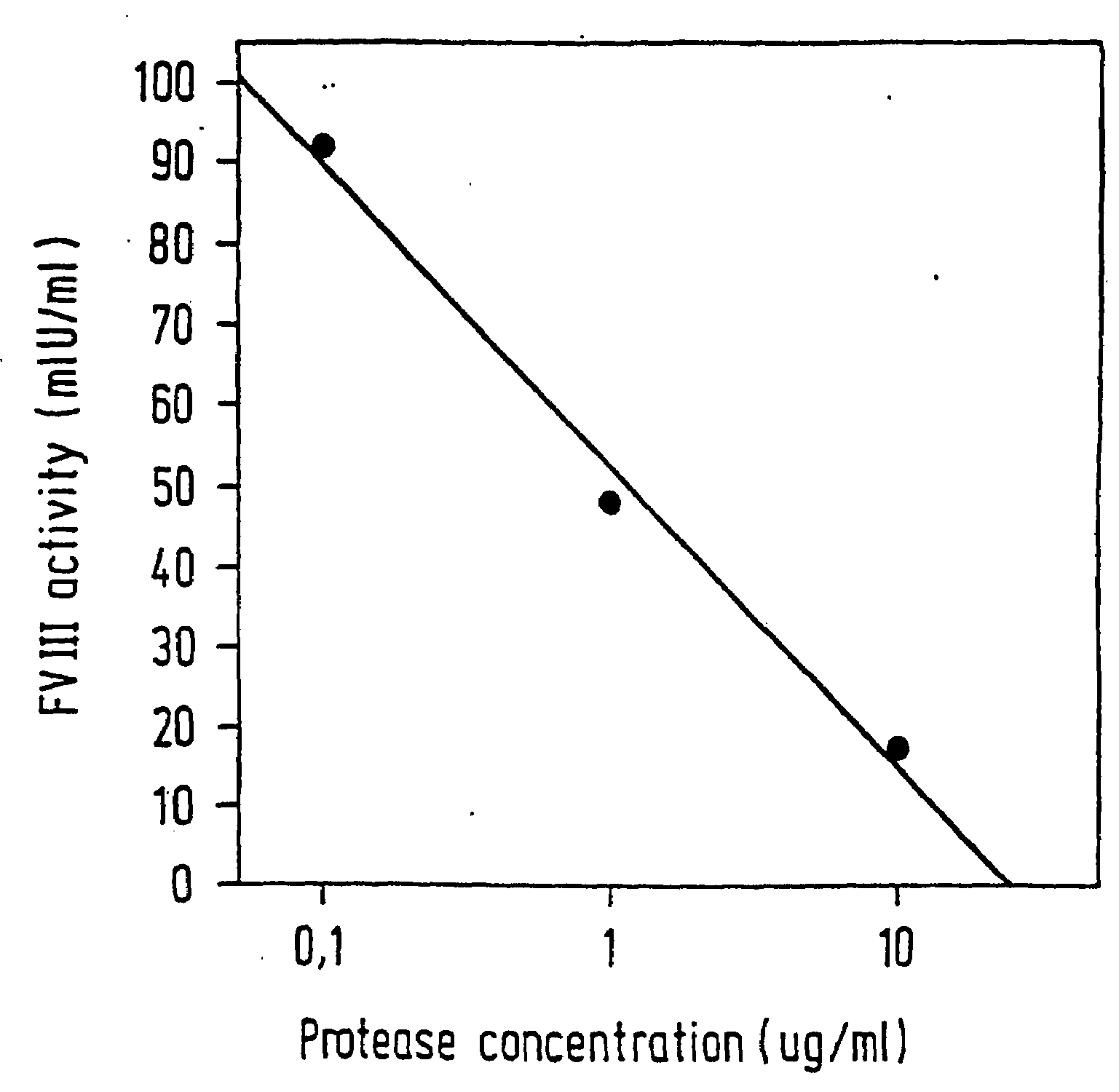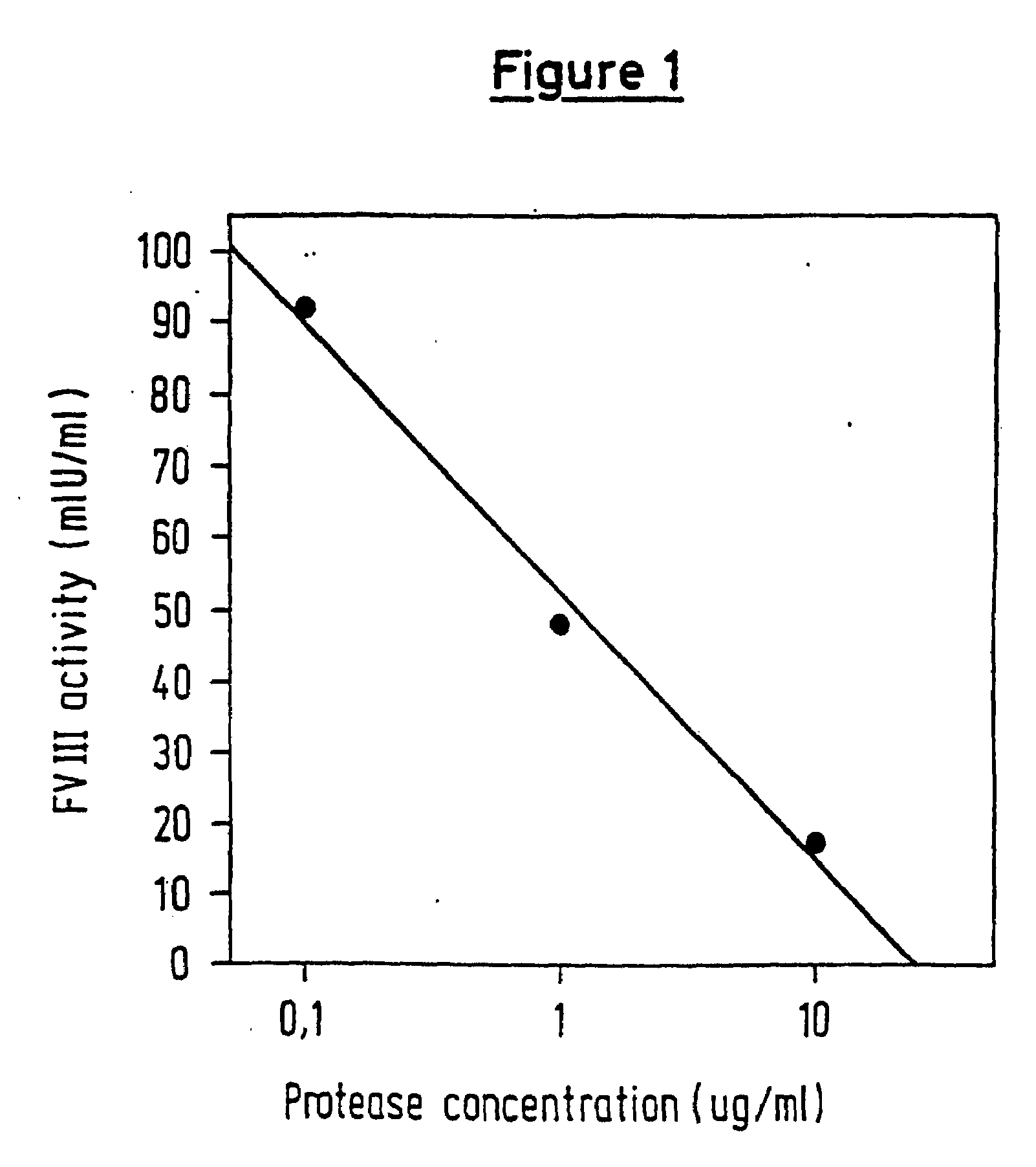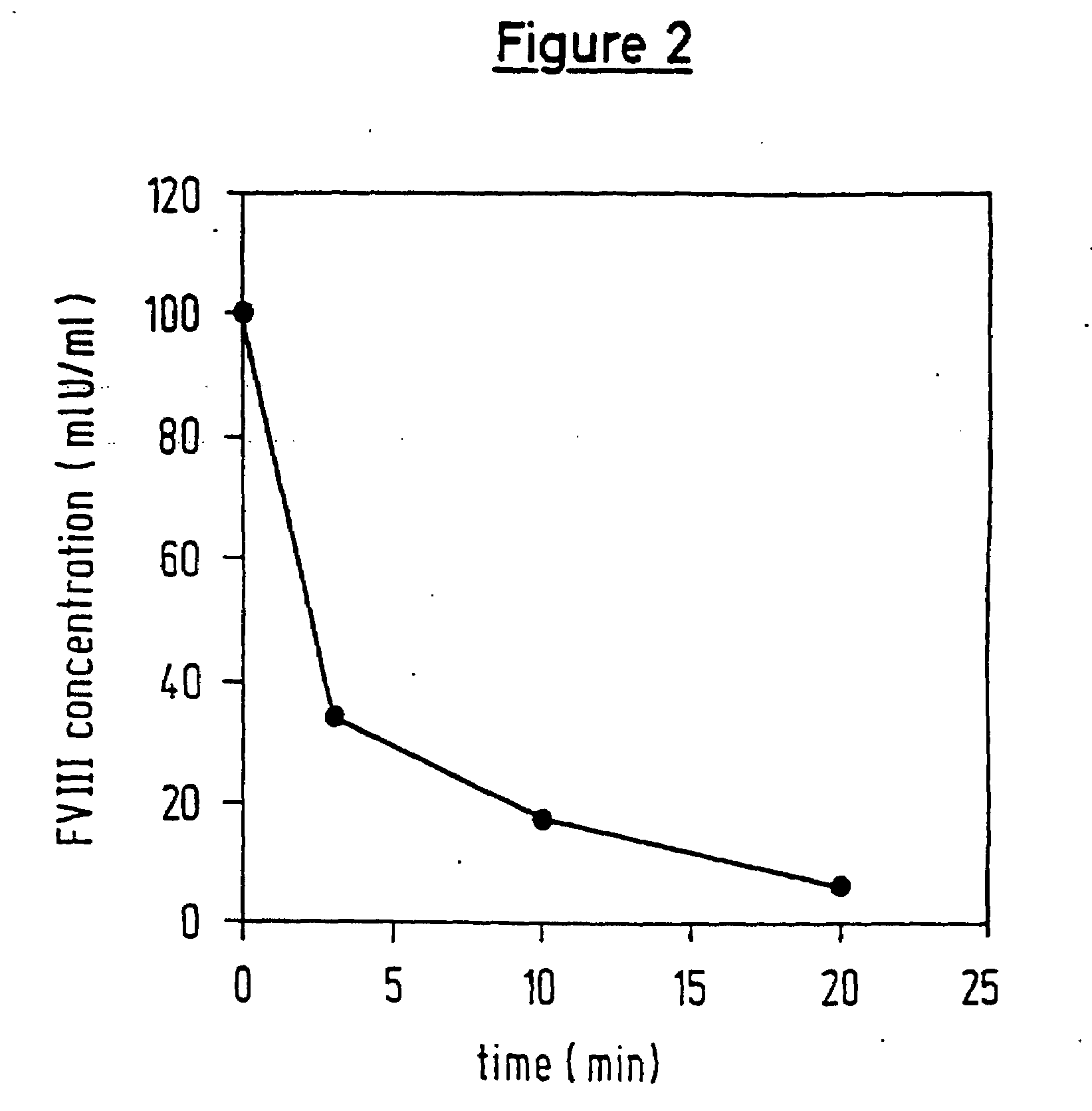Protease for activating clotting factor VII
a technology of clotting factor and protease, which is applied in the field of protea, can solve the problems of yield loss, risk of thrombosis, and inability to prevent the activity of the protease from decreasing by 50%
- Summary
- Abstract
- Description
- Claims
- Application Information
AI Technical Summary
Problems solved by technology
Method used
Image
Examples
example 1
[0063]The Staclot® FVIIa-rTF test system (Stago / Boehringer Mannheim) was used for demonstrating activation of FVII by the prepared protease. This detection system is based on the particular property of (recombinant) soluble tissue factor (rTF) which is only able to use the preformed activated FVII (FVIIa) for initiating the extrinsic clotting pathway. In contrast to the situation when complete tissue factor is used, this makes it possible to determine the real content of FVIIa precisely.
[0064]Isolated FVII (Enzyme Research Labs) was used for the activation experiments. This FVII itself contains traces of FVIIa since it is isolated from human plasma. The concentration was adjusted to 0.05 IU of FVII / ml by diluting with buffer. The FVII was incubated at room temperature for 10 min with the test substances and then tested for the true FVIIa content. The FVIIa contents were quantified using a reference curve which was constructed in parallel.
[0065]It was ascertained in preliminary exper...
example 2
[0086]This example describes how FVII is activated in a reaction which is dependent on the concentration of the protease and on the time over which the protease is incubated with FVII.
[0087]Test systems and reagents were selected to correspond with the conditions described in Example 1. In a first series of experiments, the initially introduced FVII was preincubated with different dilutions (1:5, 1:10 and 1:20) of the protease-containing solutions (5 min at RT), then treated with aprotinin (to inhibit the protease) and subsequently tested for its content of FVIIa in the FVIIa-rTF assay.
[0088]Once again, the parallel assays, in which the protease had been inhibited by aprotinin before contact with FVII, served as control assays.
[0089]The results are given as activation factors, i.e. correspond to x times the value which was measured in the abovementioned control assay.
AssayControlProtease + FVIIProtease + aprotininIncubation + AprotininIncubation + FVII
Dilution of theprotease solutio...
example 3
[0094]Using this example, it will be demonstrated that activation of FVII by the protease is increased in the presence of calcium ions and heparin.
[0095]25 μl of the protease-containing solution were mixed with 50 μl of[0096]buffer (control)[0097]15 mM CaCl2 [0098]50 USP units of heparin / ml[0099]Pathromtin (lipid mixture, aliquot dissolved in accordance with the manufacturer's instructions)[0100]at room temperature for 5 min, and then treated with 150 μl of a tris / NaCl buffer solution (pH 8.2) and 25 μl of the chromogenic substrate S2288 (3 mM); the time-dependent change in the extinction at 405 nm was then measured (at 37° C.). The activation factors, related to the buffer control (x times), are given in the following table.
Activation factorAssays(x times buffer control)Buffer control1.0+CaCl23.6+Heparin2.6+Lipid0.9+CaCl2 + heparin4.3+CaCl2 + lipid3.3+Heparin + lipid2.7+CaCl2 + heparin + lipid3.7
[0101]Under the conditions used in this example, marked increases in the activity of th...
PUM
| Property | Measurement | Unit |
|---|---|---|
| molecular weight | aaaaa | aaaaa |
| molecular weight | aaaaa | aaaaa |
| molecular weight | aaaaa | aaaaa |
Abstract
Description
Claims
Application Information
 Login to View More
Login to View More - R&D
- Intellectual Property
- Life Sciences
- Materials
- Tech Scout
- Unparalleled Data Quality
- Higher Quality Content
- 60% Fewer Hallucinations
Browse by: Latest US Patents, China's latest patents, Technical Efficacy Thesaurus, Application Domain, Technology Topic, Popular Technical Reports.
© 2025 PatSnap. All rights reserved.Legal|Privacy policy|Modern Slavery Act Transparency Statement|Sitemap|About US| Contact US: help@patsnap.com



